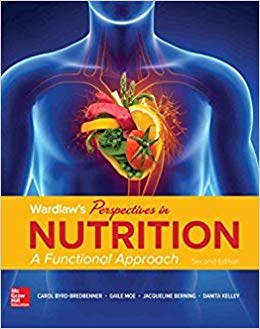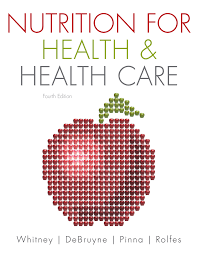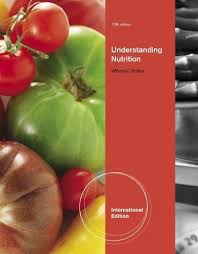Wardlaw’s Perspectives in Nutrition A Functional Approach 2nd Edition – Test Bank
Original price was: $55.00.$19.00Current price is: $19.00.
Digital item No Waiting Time Instant Download
ISBN10: 1259933849, ISBN13: 9781259933844
Authors: Byrd-Bredbenner, Moe, Berning, Kelley
Edition: 2nd Edition
Publisher: McGraw-Hill
Copyright: 2019
Description
Wardlaw’s Perspectives in Nutrition A Functional Approach 2nd Edition – Test Bank
Perspectives in Nutrition, A Functional Approach, 2e (Byrd)
Chapter 1 The Science of Nutrition
1) The science of food; the nutrients and substances therein; and their action, interaction, and balance in relation to health and disease is a definition of ________.
A) life
B) energy metabolism
C) nutrition
D) food science
Answer: C
Explanation: This is the definition of nutrition.
Difficulty: 1 Easy
Section: 01.01
Topic: Nutrition basics
Learning Objective: 01.01 Define the terms nutrition, carbohydrates, proteins, lipids (fats and oils), vitamins, minerals, water, and calories.
Bloom’s: Remember
Est Time: 0-1 minute
2) The leading cause of nutrition-related death in the United States is ________.
A) heart disease
B) homicide
C) suicide
D) diabetes
Answer: A
Explanation: Heart disease is the leading cause of death in US.
Difficulty: 1 Easy
Section: 01.01
Topic: Demographic trends and statistics; Cardiovascular disease
Learning Objective: 01.01 Define the terms nutrition, carbohydrates, proteins, lipids (fats and oils), vitamins, minerals, water, and calories.
Bloom’s: Remember
Est Time: 0-1 minute
3) Nutrients causing some signs of poor health when consumed in less than adequate amounts are called ________.
A) essential nutrients
B) nonessential nutrients
C) nutritional supplements
D) trace nutrients
Answer: A
Explanation: Some signs of poor health will eventually occur less-than-adequate essential nutrient consumption.
Difficulty: 1 Easy
Section: 01.01
Topic: Nutrition basics
Learning Objective: 01.01 Define the terms nutrition, carbohydrates, proteins, lipids (fats and oils), vitamins, minerals, water, and calories.
Bloom’s: Remember
Est Time: 0-1 minute
4) Energy-yielding nutrients include ________.
A) vitamins, minerals, and water
B) carbohydrates, proteins, and fats
C) trace minerals and fat-soluble vitamins
D) iron, vitamin C, and potassium
Answer: B
Explanation: Carbohydrates, proteins, and fats provide energy/calories.
Difficulty: 1 Easy
Section: 01.01
Topic: Nutrition basics
Learning Objective: 01.01 Define the terms nutrition, carbohydrates, proteins, lipids (fats and oils), vitamins, minerals, water, and calories.
Bloom’s: Remember
Est Time: 0-1 minute
5) Sugars, starches, and dietary fibers are examples of ________.
A) proteins
B) vitamins
C) carbohydrates
D) minerals
Answer: C
Explanation: Sugars, starches, and dietary fibers are types of carbohydrates.
Difficulty: 1 Easy
Section: 01.01
Topic: Nutrition basics; Carbohydrates
Learning Objective: 01.01 Define the terms nutrition, carbohydrates, proteins, lipids (fats and oils), vitamins, minerals, water, and calories.
Bloom’s: Remember
Est Time: 0-1 minute
6) Which of the following are sources of carbohydrates?
A) grains
B) fruits
C) vegetables
D) All of these are sources of carbohydrates.
Answer: D
Explanation: Grains, fruits and vegetables all contain carbohydrates.
Difficulty: 1 Easy
Section: 01.01
Topic: Nutrition basics; Carbohydrates
Learning Objective: 01.01 Define the terms nutrition, carbohydrates, proteins, lipids (fats and oils), vitamins, minerals, water, and calories.
Bloom’s: Remember
Est Time: 0-1 minute
7) Which is NOT a complex carbohydrate?
A) glycogen
B) glucose
C) fiber
D) starch
Answer: B
Explanation: Glucose is a simple sugar
Difficulty: 1 Easy
Section: 01.01
Topic: Nutrition basics; Carbohydrates
Learning Objective: 01.01 Define the terms nutrition, carbohydrates, proteins, lipids (fats and oils), vitamins, minerals, water, and calories.
Bloom’s: Remember
Est Time: 0-1 minute
8) Macronutrients are needed in ________ quantities in the diet, as compared to micronutrients.
A) larger
B) smaller
C) similar
Answer: A
Explanation: Macronutrients are needs in larger amounts (grams) as compared to micronutrients (milligrams and micrograms).
Difficulty: 1 Easy
Section: 01.01
Topic: Nutrition basics
Learning Objective: 01.01 Define the terms nutrition, carbohydrates, proteins, lipids (fats and oils), vitamins, minerals, water, and calories.
Bloom’s: Remember
Est Time: 0-1 minute
9) Carbohydrates can be described as ________.
A) sugars, starches, and fibers
B) compounds needed in tiny amounts
C) made of building blocks called amino acids
D) inorganic molecules regulating chemical reactions and comprising part of some body structures
Answer: A
Explanation: Sugars, starches and fibers are carbohydrates.
Difficulty: 1 Easy
Section: 01.01
Topic: Nutrition basics; Carbohydrates
Learning Objective: 01.01 Define the terms nutrition, carbohydrates, proteins, lipids (fats and oils), vitamins, minerals, water, and calories.
Bloom’s: Remember
Est Time: 0-1 minute
10) An important function of carbohydrates is to ________.
A) supply energy
B) provide amino acids
C) absorb and transport vitamins
D) promote growth and tissue repair
Answer: A
Explanation: The main function of carbohydrates is to supply energy.
Difficulty: 1 Easy
Section: 01.01
Topic: Nutrient functions; Carbohydrates
Learning Objective: 01.01 Define the terms nutrition, carbohydrates, proteins, lipids (fats and oils), vitamins, minerals, water, and calories.
Bloom’s: Remember
Est Time: 0-1 minute





Be the first to review “Wardlaw’s Perspectives in Nutrition A Functional Approach 2nd Edition – Test Bank”